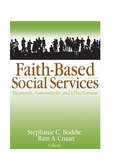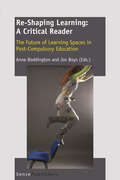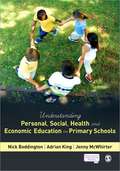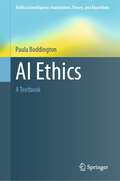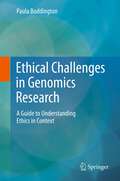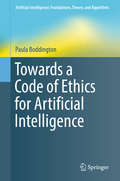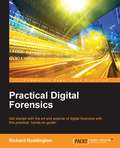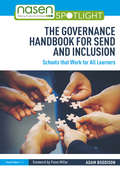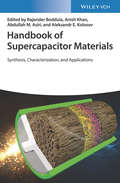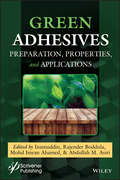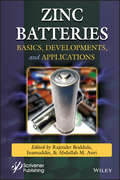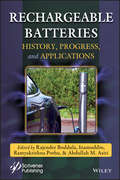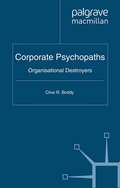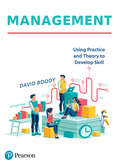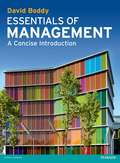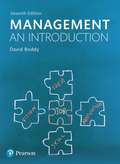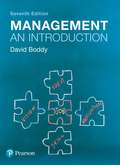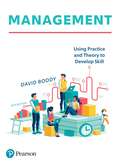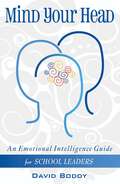- Table View
- List View
Faith-Based Social Services: Measures, Assessments, and Effectiveness
by Stephanie C. Boddie Ram A. CnaanRead the latest studies on the effectiveness of religious-based services—and the problems revealed in the assessmentThe Charitable Choice provision and the Bush Administration’s National Faith-Based Initiative have broadened the scope of social services delivered through faith-based organizations. There are expectations that these faith-based social service providers will be more effective—but how should that effectiveness be measured? Faith-Based Social Services: Measures, Assessments, and Effectiveness explains the nature and quality of religion-based social service delivery while serving as a point of reference for future research and work. This unique source tackles the important, complex issue of measuring the effectiveness of faith-based social services in comparison to secular services while providing analysis of the latest available studies.Faith-Based Social Services: Measures, Assessments, and Effectiveness provides a conceptual analysis of FBOs (faith-based organizations) that reflects the need to gather detailed studies to assess social service effectiveness while reviewing the crucial issues challenging public policy. The latest empirical research is detailed, including the problems found when comparing secular and faith-based social service providers, their organizational structures, and the types of services offered. Analysis is included of the data from a three-state evaluation of welfare to work programs, a study of four types of faith-based services found in four cities, and an assessment of a church-based program for teenage drop-outs. Topics in Faith-Based Social Services: Measures, Assessments, and Effectiveness include: discussion on how social science research shunned faith-based services and how this neglect affected effectiveness problems inherent in efficacy assessment making funding priorities decisions the causes of outcome differences a model of evaluation based on randomized controlled clinical trials using measurement practices currently used by the nonprofit sector comparative case studies in transitional housing, parent education, and residential substance abuse treatment programs latest analysis of research involving faith-based organizations and the provided services’ efficacy much more! Faith-Based Social Services: Measures, Assessments, and Effectiveness is illuminating reading, perfect for social work professionals, students, educators, sociologists, religious leaders, and seminary educators.
Re-Shaping Learning: The Future Of Learning Spaces In Post-compulsory Education
by Anne Boddington Jos BoysLearning Spaces is an emerging field, fuelled by a growing interest in the relationships between learning and spaces in which it takes place, whether conceptual, personal, social, physical and/or virtual. It is concerned with making learning spaces that can better meet the needs of 21st century learners, academics and other related publics. In post-compulsory education this has opened up many interesting and important issues. There remains a lack of any theoretical understanding as to how such spaces should be conceived or designed; and hardly any critical discussion about effective frameworks for either the development of contemporary learning spaces or for assessing their impact on learning, teaching and research. At the same time, there is much debate about what the purposes of post-compulsory education should be, as well as concerns about where and by whom it should be provided. We therefore need to urgently improve our understanding of the interactions between learning and space. It is essential that we not only share perspectives, theories and methodologies but also critically reflect on our own different assumptions, and work together to build better models for post-compulsory education in the future. To help in this process this book is designed as a ‘critical reader’ that can enable researchers, academics, students and managers involved in Learning Spaces to share and engage with some key ideas, issues and texts. A central aim is to bring together some of the best research from across the many different disciplines concerned with learning spaces, including education, architecture, anthropology, human-computer interaction, estate planning and museum studies. Reshaping Learning is thus intended for anyone interested in, and wanting to think more about, learning spaces whether as users, clients or managers; or who are want to better understand interactions between the social and the spatial.
Understanding Personal, Social, Health and Economic Education in Primary Schools (PDF)
by Nick Boddington'This book is a gift for anyone teaching PSHE whether they are new to the profession or experienced practitioners. Sound pedagogical discussion is combined with practical advice to ensure lessons are relevant, meet the needs of learners and allow sensitive issues to be explored in a safe and supportive way.' - Liz Griffiths, Lead Assessor, National PSHE CPD Programme
AI Ethics: A Textbook (Artificial Intelligence: Foundations, Theory, and Algorithms)
by Paula BoddingtonThis book introduces readers to critical ethical concerns in the development and use of artificial intelligence. Offering clear and accessible information on central concepts and debates in AI ethics, it explores how related problems are now forcing us to address fundamental, age-old questions about human life, value, and meaning. In addition, the book shows how foundational and theoretical issues relate to concrete controversies, with an emphasis on understanding how ethical questions play out in practice. All topics are explored in depth, with clear explanations of relevant debates in ethics and philosophy, drawing on both historical and current sources. Questions in AI ethics are explored in the context of related issues in technology, regulation, society, religion, and culture, to help readers gain a nuanced understanding of the scope of AI ethics within broader debates and concerns. Written with both students and educators in mind, the book is easy to use, with key terms clearly explained, and numerous exercises designed to stretch and challenge. It offers readers essential insights into the evolving field of AI ethics. Moreover, it presents a range of methods and strategies that can be used to analyse and understand ethical questions, which are illustrated throughout with case studies.
Ethical Challenges in Genomics Research: A Guide to Understanding Ethics in Context
by Paula BoddingtonNew developments in science and technology have resulted in shifting ethical challenges in many areas including in genomics research. This book enables those who are involved in genomics research, whether as researcher, participant or policy maker, to understand the ethical issues currently developing in this field and to participate actively in these important debates. A clear account is given of how science and technology are outstripping the capacity of previous ethical regulations to cope with current issues, together with practical illustrations of possible ways forward. Key ethical ideas are presented, drawing on the history of research regulation and on an account of the particular challenges arising in the field of genomics. The book uses a grounded, practical approach to explaining ethical concepts and issues which is geared to enhancing interdisciplinary dialogue. Its broad approach to ethical issues includes relevant considerations from social psychology and there is a particular emphasis on understanding the problems of ethical regulations and practice in the institutional and social context of research. A glossary and numerous text boxes explaining relevant terms and key ideas help to make the work an invaluable resource for both beginners and experts in the field.
Towards a Code of Ethics for Artificial Intelligence (Artificial Intelligence: Foundations, Theory, and Algorithms)
by Paula BoddingtonThe author investigates how to produce realistic and workable ethical codes or regulations in this rapidly developing field to address the immediate and realistic longer-term issues facing us. She spells out the key ethical debates concisely, exposing all sides of the arguments, and addresses how codes of ethics or other regulations might feasibly be developed, looking for pitfalls and opportunities, drawing on lessons learned in other fields, and explaining key points of professional ethics.The book provides a useful resource for those aiming to address the ethical challenges of AI research in meaningful and practical ways.
Practical Digital Forensics: Get started with the art and science of digital forensics with this practical, hands-on guide!
by Richard BoddingtonGet started with the art and science of digital forensics with this practical, hands-on guide!Key FeaturesChampion the skills of digital forensics by understanding the nature of recovering and preserving digital information which is essential for legal or disciplinary proceedingsExplore new and promising forensic processes and tools based on 'disruptive technology' to regain control of caseloads.Richard Boddington, with 10+ years of digital forensics, demonstrates real life scenarios with a pragmatic approachBook DescriptionDigital Forensics is a methodology which includes using various tools, techniques, and programming language. This book will get you started with digital forensics and then follow on to preparing investigation plan and preparing toolkit for investigation. In this book you will explore new and promising forensic processes and tools based on ‘disruptive technology’ that offer experienced and budding practitioners the means to regain control of their caseloads. During the course of the book, you will get to know about the technical side of digital forensics and various tools that are needed to perform digital forensics. This book will begin with giving a quick insight into the nature of digital evidence, where it is located and how it can be recovered and forensically examined to assist investigators. This book will take you through a series of chapters that look at the nature and circumstances of digital forensic examinations and explains the processes of evidence recovery and preservation from a range of digital devices, including mobile phones, and other media. This book has a range of case studies and simulations will allow you to apply the knowledge of the theory gained to real-life situations. By the end of this book you will have gained a sound insight into digital forensics and its key components. What you will learnGain familiarity with a range of different digital devices and operating and application systems that store digital evidence.Appreciate and understand the function and capability of forensic processes and tools to locate and recover digital evidence.Develop an understanding of the critical importance of recovering digital evidence in pristine condition and ensuring its safe handling from seizure to tendering it in evidence in court.Recognise the attributes of digital evidence and where it may be hidden and is often located on a range of digital devices.Understand the importance and challenge of digital evidence analysis and how it can assist investigations and court cases.Explore emerging technologies and processes that empower forensic practitioners and other stakeholders to harness digital evidence more effectively.Who this book is forThis book is for anyone who wants to get into the field of digital forensics. Prior knowledge of programming languages (any) will be of great help, but not a compulsory prerequisite.
Practical Digital Forensics: Get started with the art and science of digital forensics with this practical, hands-on guide!
by Richard BoddingtonGet started with the art and science of digital forensics with this practical, hands-on guide!Key FeaturesChampion the skills of digital forensics by understanding the nature of recovering and preserving digital information which is essential for legal or disciplinary proceedingsExplore new and promising forensic processes and tools based on 'disruptive technology' to regain control of caseloads.Richard Boddington, with 10+ years of digital forensics, demonstrates real life scenarios with a pragmatic approachBook DescriptionDigital Forensics is a methodology which includes using various tools, techniques, and programming language. This book will get you started with digital forensics and then follow on to preparing investigation plan and preparing toolkit for investigation. In this book you will explore new and promising forensic processes and tools based on ‘disruptive technology’ that offer experienced and budding practitioners the means to regain control of their caseloads. During the course of the book, you will get to know about the technical side of digital forensics and various tools that are needed to perform digital forensics. This book will begin with giving a quick insight into the nature of digital evidence, where it is located and how it can be recovered and forensically examined to assist investigators. This book will take you through a series of chapters that look at the nature and circumstances of digital forensic examinations and explains the processes of evidence recovery and preservation from a range of digital devices, including mobile phones, and other media. This book has a range of case studies and simulations will allow you to apply the knowledge of the theory gained to real-life situations. By the end of this book you will have gained a sound insight into digital forensics and its key components. What you will learnGain familiarity with a range of different digital devices and operating and application systems that store digital evidence.Appreciate and understand the function and capability of forensic processes and tools to locate and recover digital evidence.Develop an understanding of the critical importance of recovering digital evidence in pristine condition and ensuring its safe handling from seizure to tendering it in evidence in court.Recognise the attributes of digital evidence and where it may be hidden and is often located on a range of digital devices.Understand the importance and challenge of digital evidence analysis and how it can assist investigations and court cases.Explore emerging technologies and processes that empower forensic practitioners and other stakeholders to harness digital evidence more effectively.Who this book is forThis book is for anyone who wants to get into the field of digital forensics. Prior knowledge of programming languages (any) will be of great help, but not a compulsory prerequisite.
The Governance Handbook for SEND and Inclusion: Schools that Work for All Learners (nasen spotlight)
by Adam BoddisonThe Governance Handbook for SEND and Inclusion supports governors and trustees in developing effective strategic practice to ensure an inclusive culture in their schools. Building on the six principles of effective governance, it provides useful tips on achieving the right balance of support and challenge so that schools are enabled to meet the needs of learners with SEND (Special Educational Needs and/or Disabilities). Relevant for all governors and trustees across primary and secondary schools, multi-academy trusts and specialist settings, the book focuses on the role and expectations of governance in relation to SEND and inclusion. It includes: An introduction to SEND, inclusion and the six key features of effective governance Practical advice and guidance for SEND Governors and trustees on how to strategically monitor and review SEND provision A discussion of how the relationship between SENCOs, SEND Governors and Headteachers works in practice Advice on developing an inclusive culture in your school Sources of ongoing support and resources from professional organisations and websites. This book will be beneficial to all education professionals working at a strategic level, including governors and trustees, school leaders and SENCOs. It recognises the central role that governors and trustees play in setting the inclusive ethos of a school and suggests ways to ensure that strategic practice is as effective as possible.
The Governance Handbook for SEND and Inclusion: Schools that Work for All Learners (nasen spotlight)
by Adam BoddisonThe Governance Handbook for SEND and Inclusion supports governors and trustees in developing effective strategic practice to ensure an inclusive culture in their schools. Building on the six principles of effective governance, it provides useful tips on achieving the right balance of support and challenge so that schools are enabled to meet the needs of learners with SEND (Special Educational Needs and/or Disabilities). Relevant for all governors and trustees across primary and secondary schools, multi-academy trusts and specialist settings, the book focuses on the role and expectations of governance in relation to SEND and inclusion. It includes: An introduction to SEND, inclusion and the six key features of effective governance Practical advice and guidance for SEND Governors and trustees on how to strategically monitor and review SEND provision A discussion of how the relationship between SENCOs, SEND Governors and Headteachers works in practice Advice on developing an inclusive culture in your school Sources of ongoing support and resources from professional organisations and websites. This book will be beneficial to all education professionals working at a strategic level, including governors and trustees, school leaders and SENCOs. It recognises the central role that governors and trustees play in setting the inclusive ethos of a school and suggests ways to ensure that strategic practice is as effective as possible.
Microsoft Unified XDR and SIEM Solution Handbook: Modernize and build a unified SOC platform for future-proof security
by Raghu Boddu Sami LamppuA practical guide to deploying, managing, and leveraging the power of Microsoft's unified security solutionKey FeaturesLearn how to leverage Microsoft's XDR and SIEM for long-term resilienceExplore ways to elevate your security posture using Microsoft Defender tools such as MDI, MDE, MDO, MDA, and MDCDiscover strategies for proactive threat hunting and rapid incident responsePurchase of the print or Kindle book includes a free PDF eBookBook DescriptionTired of dealing with fragmented security tools and navigating endless threat escalations? Take charge of your cyber defenses with the power of Microsoft's unified XDR and SIEM solution. This comprehensive guide offers an actionable roadmap to implementing, managing, and leveraging the full potential of the powerful unified XDR + SIEM solution, starting with an overview of Zero Trust principles and the necessity of XDR + SIEM solutions in modern cybersecurity. From understanding concepts like EDR, MDR, and NDR and the benefits of the unified XDR + SIEM solution for SOC modernization to threat scenarios and response, you’ll gain real-world insights and strategies for addressing security vulnerabilities. Additionally, the book will show you how to enhance Secure Score, outline implementation strategies and best practices, and emphasize the value of managed XDR and SIEM solutions. That’s not all; you’ll also find resources for staying updated in the dynamic cybersecurity landscape. By the end of this insightful guide, you'll have a comprehensive understanding of XDR, SIEM, and Microsoft's unified solution to elevate your overall security posture and protect your organization more effectively.What you will learnOptimize your security posture by mastering Microsoft's robust and unified solutionUnderstand the synergy between Microsoft Defender's integrated tools and Sentinel SIEM and SOARExplore practical use cases and case studies to improve your security postureSee how Microsoft's XDR and SIEM proactively disrupt attacks, with examplesImplement XDR and SIEM, incorporating assessments and best practicesDiscover the benefits of managed XDR and SOC services for enhanced protectionWho this book is forThis comprehensive guide is your key to unlocking the power of Microsoft's unified XDR and SIEM offering. Whether you're a cybersecurity pro, incident responder, SOC analyst, or simply curious about these technologies, this book has you covered. CISOs, IT leaders, and security professionals will gain actionable insights to evaluate and optimize their security architecture with Microsoft's integrated solution. This book will also assist modernization-minded organizations to maximize existing licenses for a more robust security posture.
Handbook of Supercapacitor Materials: Synthesis, Characterization, and Applications
by Rajender BoddulaDiscover foundational and cutting-edge concepts in the supercapacitor materials industry Dramatic population growth and the development of lightweight portable electronic devices have accelerated the demand for faster and more sustainable energy storage systems. Supercapacitors promise to revolutionize the field due to their high energy and power density, long cycle life, fast rate of charge-discharge, and excellent safety record. In Handbook of Supercapacitor Materials: Synthesis, Characterization, and Applications, a distinguished team of researchers delivers a comprehensive review of nature-inspired, organic, inorganic, and polymeric materials used in supercapacitor technology. The book explores aspects of synthesis methods, properties, foundational concepts, and the mechanisms of supercapacitor electrode materials. The distinguished editors also provide resources that focus on supercapacitor performance utilizing electrical double layer electrodes and pseudocapacitor electrodes. State-of-the-art research is discussed in detail and will be extraordinary useful for graduate students, faculty, engineers, and scientists in solid-state chemistry, energy science, and materials science departments. Readers will also find: Overviews of mussel-inspired materials for electrochemical supercapacitors, bio-inspired active materials for supercapacitors, and self-healing supercapacitors Practical discussions of polysaccharide-derived materials for supercapacitors, bio-derived carbon-based materials for supercapacitors, and metal oxides A thorough introduction to metal chalcogenides and metal hydroxides for supercapacitors An examination of template strategy direction towards conducting polymer for supercapacitors A treatment of the morphology paradigm of conducting polymers Perfect for materials scientists, electrochemists, engineers in power technology, Handbook of Supercapacitor Materials: Synthesis, Characterization, and Applications is also a must-have resource for professionals working in the electrotechnical and automobile industries.
Green Adhesives: Preparation, Properties, and Applications
by Rajender Boddula Mohd Imran Ahamed Abdullah M. Asiri InamuddinGreen Adhesives: Preparation, Properties and Applications deals with the fabrication methods, characterization, and applications of green adhesives. It also includes the collective properties of waterborne, bio, and wound-healing green adhesives. Exclusive attention is devoted to discussing the applications of green adhesives in biomedical coatings, food, and industrial applications.
Zinc Batteries: Basics, Developments, and Applications
by Rajender Boddula Inamuddin Abdullah M. AsiriBattery technology is constantly changing, and the concepts and applications of these changes are rapidly becoming increasingly more important as more and more industries and individuals continue to make “greener” choices in their energy sources. As global dependence on fossil fuels slowly wanes, there is a heavier and heavier importance placed on cleaner power sources and methods for storing and transporting that power. Battery technology is a huge part of this global energy revolution. Zinc batteries are an advantageous choice over lithium-based batteries, which have dominated the market for years in multiple areas, most specifically in electric vehicles and other battery-powered devices. Zinc is the fourth most abundant metal in the world, which is influential in its lower cost, making it a very attractive material for use in batteries. Zinc-based batteries have been around since the 1930s, but only now are they taking center stage in the energy, automotive, and other industries. Zinc Batteries: Basics, Developments, and Applicationsis intended as a discussion of the different zinc batteries for energy storage applications. It also provides an in-depth description of various energy storage materials for Zinc (Zn) batteries. This book is an invaluable reference guide for electrochemists, chemical engineers, students, faculty, and R&D professionals in energy storage science, material science, and renewable energy.
Rechargeable Batteries: History, Progress, and Applications
by Rajender Boddula Inamuddin Ramyakrishna Pothu Abdullah M. AsiriBattery technology is constantly changing, and the concepts and applications of these changes are rapidly becoming increasingly more important as more and more industries and individuals continue to make “greener” choices in their energy sources. As global dependence on fossil fuels slowly wanes, there is a heavier and heavier importance placed on cleaner power sources and methods for storing and transporting that power. Battery technology is a huge part of this global energy revolution. Rechargeable battery technologies have been a milestone for moving toward a fossil-fuel-free society. They include groundbreaking changes in energy storage, transportation, and electronics. Improvements in battery electrodes and electrolytes have been a remarkable development, and, in the last few years, rechargeable batteries have attracted significant interest from scientists as they are a boon for electric vehicles, laptops and computers, mobile phones, portable electronics, and grid-level electricity storage devices. Rechargeable Batteries: History, Progress, and Applicationsoutlines the history, development, future, and applications for rechargeable batteries for energy storage applications. It also provides an in-depth description of various energy storage materials and is an invaluable reference guide for electrochemists, chemical engineers, students, faculty, and R&D professionals in energy storage science, material science, and renewable energy. This is a must-have for any engineer’s library who works with batteries and energy storage.
Rechargeable Batteries: History, Progress, and Applications
by Rajender Boddula Inamuddin Ramyakrishna Pothu Abdullah M. AsiriBattery technology is constantly changing, and the concepts and applications of these changes are rapidly becoming increasingly more important as more and more industries and individuals continue to make “greener” choices in their energy sources. As global dependence on fossil fuels slowly wanes, there is a heavier and heavier importance placed on cleaner power sources and methods for storing and transporting that power. Battery technology is a huge part of this global energy revolution. Rechargeable battery technologies have been a milestone for moving toward a fossil-fuel-free society. They include groundbreaking changes in energy storage, transportation, and electronics. Improvements in battery electrodes and electrolytes have been a remarkable development, and, in the last few years, rechargeable batteries have attracted significant interest from scientists as they are a boon for electric vehicles, laptops and computers, mobile phones, portable electronics, and grid-level electricity storage devices. Rechargeable Batteries: History, Progress, and Applicationsoutlines the history, development, future, and applications for rechargeable batteries for energy storage applications. It also provides an in-depth description of various energy storage materials and is an invaluable reference guide for electrochemists, chemical engineers, students, faculty, and R&D professionals in energy storage science, material science, and renewable energy. This is a must-have for any engineer’s library who works with batteries and energy storage.
Handbook of Supercapacitor Materials: Synthesis, Characterization, and Applications
by Rajender Boddula Anish Khan Abdullah M. Asiri Aleksandr E. KolosovDiscover foundational and cutting-edge concepts in the supercapacitor materials industry Dramatic population growth and the development of lightweight portable electronic devices have accelerated the demand for faster and more sustainable energy storage systems. Supercapacitors promise to revolutionize the field due to their high energy and power density, long cycle life, fast rate of charge-discharge, and excellent safety record. In Handbook of Supercapacitor Materials: Synthesis, Characterization, and Applications, a distinguished team of researchers delivers a comprehensive review of nature-inspired, organic, inorganic, and polymeric materials used in supercapacitor technology. The book explores aspects of synthesis methods, properties, foundational concepts, and the mechanisms of supercapacitor electrode materials. The distinguished editors also provide resources that focus on supercapacitor performance utilizing electrical double layer electrodes and pseudocapacitor electrodes. State-of-the-art research is discussed in detail and will be extraordinary useful for graduate students, faculty, engineers, and scientists in solid-state chemistry, energy science, and materials science departments. Readers will also find: Overviews of mussel-inspired materials for electrochemical supercapacitors, bio-inspired active materials for supercapacitors, and self-healing supercapacitors Practical discussions of polysaccharide-derived materials for supercapacitors, bio-derived carbon-based materials for supercapacitors, and metal oxides A thorough introduction to metal chalcogenides and metal hydroxides for supercapacitors An examination of template strategy direction towards conducting polymer for supercapacitors A treatment of the morphology paradigm of conducting polymers Perfect for materials scientists, electrochemists, engineers in power technology, Handbook of Supercapacitor Materials: Synthesis, Characterization, and Applications is also a must-have resource for professionals working in the electrotechnical and automobile industries.
Corporate Psychopaths: Organizational Destroyers
by C. BoddyPsychopaths are little understood outside of the criminal image. However, as the recent global financial crisis highlighted, the behavior of a small group of managers can potentially bring down the entire western system of business. This book investigates who they are, why they do what they do and what the consequences of their presence are.
Essentials of Management: A Concise Introduction
by David BoddyThis concise, readable book offers an unparalleled introduction to the theory and practice of management. Packed with examples and questions to arouse your interest, it shows how ideas and theories of management relate to the real world. Principles of Management introduces the themes and functions of management, showing them within the clear framework of planning, organising, leading and controlling. It incorporates the latest research, and uses recent and topical examples of management in practice to bring the topic to life.This textbook is relevant to students from all subject areas. Whether you are specialising in business, or an engineering student taking a single module in the area, this book will offer you an engaging and clear introduction to management.
Management: An Introduction
by David BoddyThis is an accessible and academically rigorous guide to the themes and functions of management. It contains in depth case studies that examine key management issues in a broad range of organisations, from Apple and Virgin to the British Heart Foundation and Management in Practice features full of insights into contemporary management activities. Entrepreneurship, sustainability, governance and internationalization are integrated throughout, giving clear guidance on how students can further their understanding of these key topics.
Management: An Introduction (PDF)
by David BoddyThis is an accessible and academically rigorous guide to the themes and functions of management. It contains in depth case studies that examine key management issues in a broad range of organisations, from Apple and Virgin to the British Heart Foundation and Management in Practice features full of insights into contemporary management activities. Entrepreneurship, sustainability, governance and internationalization are integrated throughout, giving clear guidance on how students can further their understanding of these key topics.
Management: An Introduction
by David BoddyThis is an accessible and academically rigorous guide to the themes and functions of management. It contains in depth case studies that examine key management issues in a broad range of organisations, from Apple and Virgin to the British Heart Foundation and Management in Practice features full of insights into contemporary management activities. Entrepreneurship, sustainability, governance and internationalization are integrated throughout, giving clear guidance on how students can further their understanding of these key topics.
Mind Your Head: An Emotional Intelligence Guide For School Leaders
by David BoddyAt a time when recent governments continue to suffocate head teachers in a sea of bureaucratic initiatives, this book encourages educational leaders to be adventurous, distinctive and above all independent. David Boddy calls on his 30-year passion for philosophy and meditation to inspire heads and aspiring heads to manage the enormous mental and emotional challenges of the job, while still reaching for the best in all around them. Mind Your Head encourages readers to challenge their experiences both as head teachers and more importantly as lead teachers, to educate and to inspire those whose lives they touch on a daily basis: colleagues, parents and, first and foremost, pupils.
